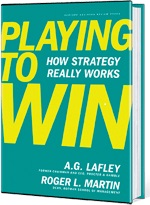Ask Mariposa: Coaching vs. Therapy
David asks: What’s the difference between coaching and therapy?
Edie Heilman, Executive Leadership Coach, responds:
This question comes up quite often because coaching and psychotherapy are both approaches to the challenges of life and work. However the purpose and approaches are different.
Psychotherapy deals primarily with a person’s current or past difficulties to enable healing and resolve old pain. The therapist is licensed, knowledgeable about psychological theories and is the expert in the relationship. The therapist diagnoses then provides expertise to help improve the patient’s well-being. The process is often open-ended.
Coaching is forward looking with a focus on the client’s effectiveness and impact in their life, or their organization – as in with executive leadership coaching. Together the client and coach explore new ways of thinking, acting and solving problems. The process includes assessment, feedback, goal setting and practice. The coach provides tools and guidance to help the client self-observe, try new perspectives and behaviors and make choices that help them achieve their desired outcomes. A typical coaching engagement lasts six months with specific executive development objectives.
Patrick Williams says “therapy is about recovering and uncovering while coaching is about discovering”.
MORE



